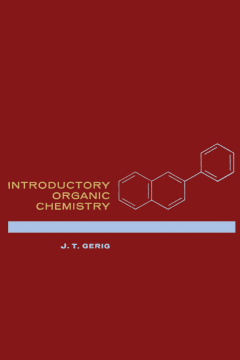
Additional Information
Book Details
Abstract
Introductory Organic Chemistry provides a descriptive overview of organic chemistry and how modern organic chemistry is practiced. Organic compounds such as alkanes, cycloalkanes, alkenes, cycloalkenes, and alkynes are covered, along with aromatic hydrocarbons, compounds derived from water and hydrogen sulfide, and compounds derived from ammonia. This book also explores organic reaction mechanisms and describes the use of molecular spectroscopy in studying the chemical structure of organic complexes.
This text consists of 15 chapters and begins with a discussion on some fundamental ideas about organic chemistry, from the electronic structure of atoms to molecular structure, molecular orbitals, hybridization of atomic orbitals in carbon, chemical equilibrium, enthalpy, and acids and bases. The chapters that follow focus on the compounds of carbon such as alkanes and cycloalkanes; benzene and other aromatic hydrocarbons; amines and other heterocyclic molecules; aldehydes and ketones; carboxylic acids and their derivatives; nucleic acids; amino acids; peptides; and proteins. The use of instrumentation methods in organic chemistry, particularly mass spectrometry and nuclear magnetic resonance spectroscopy, is also considered. An account of the mechanisms of an organic reaction is presented, paying particular attention to displacement and elimination reactions. This book concludes with a commentary on how most of the amino acids, sugars, heterocyclic molecules, and fatty acids necessary for life processes could have been formed on Earth.
This book is intended for nonmajors taking an introductory organic chemistry course of two quarters or one semester in length.
